This is an ongoing research and development project undertaken by Yandell Walton
with Harrison Hall, Liam Somerville, Patty Preece, Nick Moloney.
Supported by Creative Australia Council, Creative Victoria Arts Grant,
City of Melbourne, Platform Arts Geelong, Chunky Move Minimax Residency, Phillip Hunter Fellowship, ANAT and Abbotsford Convent.
ABOUT
"Ecological Adaptation" is a transdisciplinary installation that explores the interconnectedness between humans, nature and technology. It seeks to interrogate and ultimately move beyond human-centric paradigms through embodied, machine-assisted explorations of more-than-human worlds. The installation consists of large movable LED screens that display a virtual environment of 3D-modelled plant life.
Initially critiqued for privileging human presence and interaction, the project is now evolving toward an ecosystemic model where agency is more equitably distributed across computational, ecological and nonhuman actors. Combining motion capture, real-time simulation, responsive sound and lighting design, and environmental data, the work forms an immersive installation utilising custom-made movable LED screens and performance.
Motion capture data is captured to affect the plant life using human movement.
PROCESS
The creative process involves a long-standing collaboration between artist Yandell Walton and digital choreographer Harrison Hall, and a team including Real-Time artist Liam Somerville, sound artist Patty Preece and dancer Sarah Aiken. To create the 3D modelled plant life, Yandell uses various plant species as reference and utilises photogrammetry and 3D modelling software to create realistic-looking plants. These were gathered in vulnerable forest ecosystems including the Amazon, Daintree Rainforest and K’gari Island.
The project explores entangled agencies across human and nonhuman domains. Technologies such as real-time game engines and technological tools are not treated as passive mediators but as active collaborators. Environmental elements like wind and light fluctuations are co-creators, influencing aesthetic outputs through their movements. These elements form dynamic feedback loops (Is this correct) that are both unique and continually evolving, with shared agency.
![]()
![]()
![]()
![]()
![]()
![]()
![]()
![]()
![]()
![]()
In Ecological Adaptation, the networking number 255.255.255.0 functions as both a technical and conceptual framework for understanding interconnection. In computer networking, this subnet mask defines how devices communicate within a shared system, distinguishing between the collective (network) and the individual (host). Within this work, this concept mirrors the distributed relationships between human, nonhuman, and machinic agents.
By networking multiple computers, sensors, and technologies, we construct an ecosystem where each element operates as a host within a larger web of exchange. The subnet mask becomes a metaphor for ecological entanglement: it marks boundaries not as separations, but as zones of relation through which information, energy, and agency circulate.
Development October 2025, Abbotsford Convent
In this development, we focused on working with sound and light, merging the actual and virtual. We used the VIVE tracker to enable real-time movement of the screen in virtual space, acting like a portal. Using DMX we linked the actual lighting with the virtual lighting and enabled sound to trigger lights.
This development focused only on the Motion Capture / Human Movement
to the virtual plants.
Work in Development Project8, December 2023
![]()
![]()
![]()
![]()
![]()
![]()
![]()
![]()
CONCEPT
Embedded in post-human feminism, "Ecological Adaptation" challenges the traditional notion of a clear boundary between humans and nature, and critiques the patriarchal structures that dominate society. The artwork delves into the concept of the cyborg as a cross-species hybrid, transcending the idea of human dominance and emphasising the significance of a multi-species perspective.
By incorporating post-human feminism, "Ecological Adaptation" interrogates the power dynamics inherent in human-nature relationships and dismantles the hierarchical structures that prioritize human superiority. The artwork calls into question the anthropocentric worldview that disregards the agency and intrinsic value of non-human beings.
Through the fusion of 3D modeled plant life and human movement using motion capture data, "Ecological Adaptation" blurs the boundaries between species and challenges the assumed dominance of humans. This hybrid form disrupts traditional notions of gender and species roles, opening up possibilities for new ways of perceiving and relating to the natural world.
"Ecological Adaptation" prompts us to reconsider our relationship with nature and the ways in which we can coexist and collaborate with other species.
Development Minimax residency at Chunky Move, May 2023
![]()
![]()
with Harrison Hall, Liam Somerville, Patty Preece, Nick Moloney.
Supported by Creative Australia Council, Creative Victoria Arts Grant,
City of Melbourne, Platform Arts Geelong, Chunky Move Minimax Residency, Phillip Hunter Fellowship, ANAT and Abbotsford Convent.
ABOUT
"Ecological Adaptation" is a transdisciplinary installation that explores the interconnectedness between humans, nature and technology. It seeks to interrogate and ultimately move beyond human-centric paradigms through embodied, machine-assisted explorations of more-than-human worlds. The installation consists of large movable LED screens that display a virtual environment of 3D-modelled plant life.
Initially critiqued for privileging human presence and interaction, the project is now evolving toward an ecosystemic model where agency is more equitably distributed across computational, ecological and nonhuman actors. Combining motion capture, real-time simulation, responsive sound and lighting design, and environmental data, the work forms an immersive installation utilising custom-made movable LED screens and performance.
Motion capture data is captured to affect the plant life using human movement.
PROCESS
The creative process involves a long-standing collaboration between artist Yandell Walton and digital choreographer Harrison Hall, and a team including Real-Time artist Liam Somerville, sound artist Patty Preece and dancer Sarah Aiken. To create the 3D modelled plant life, Yandell uses various plant species as reference and utilises photogrammetry and 3D modelling software to create realistic-looking plants. These were gathered in vulnerable forest ecosystems including the Amazon, Daintree Rainforest and K’gari Island.
Reimagining Agency
The project explores entangled agencies across human and nonhuman domains. Technologies such as real-time game engines and technological tools are not treated as passive mediators but as active collaborators. Environmental elements like wind and light fluctuations are co-creators, influencing aesthetic outputs through their movements. These elements form dynamic feedback loops (Is this correct) that are both unique and continually evolving, with shared agency.
Development November 2025, Abbotsford Convent
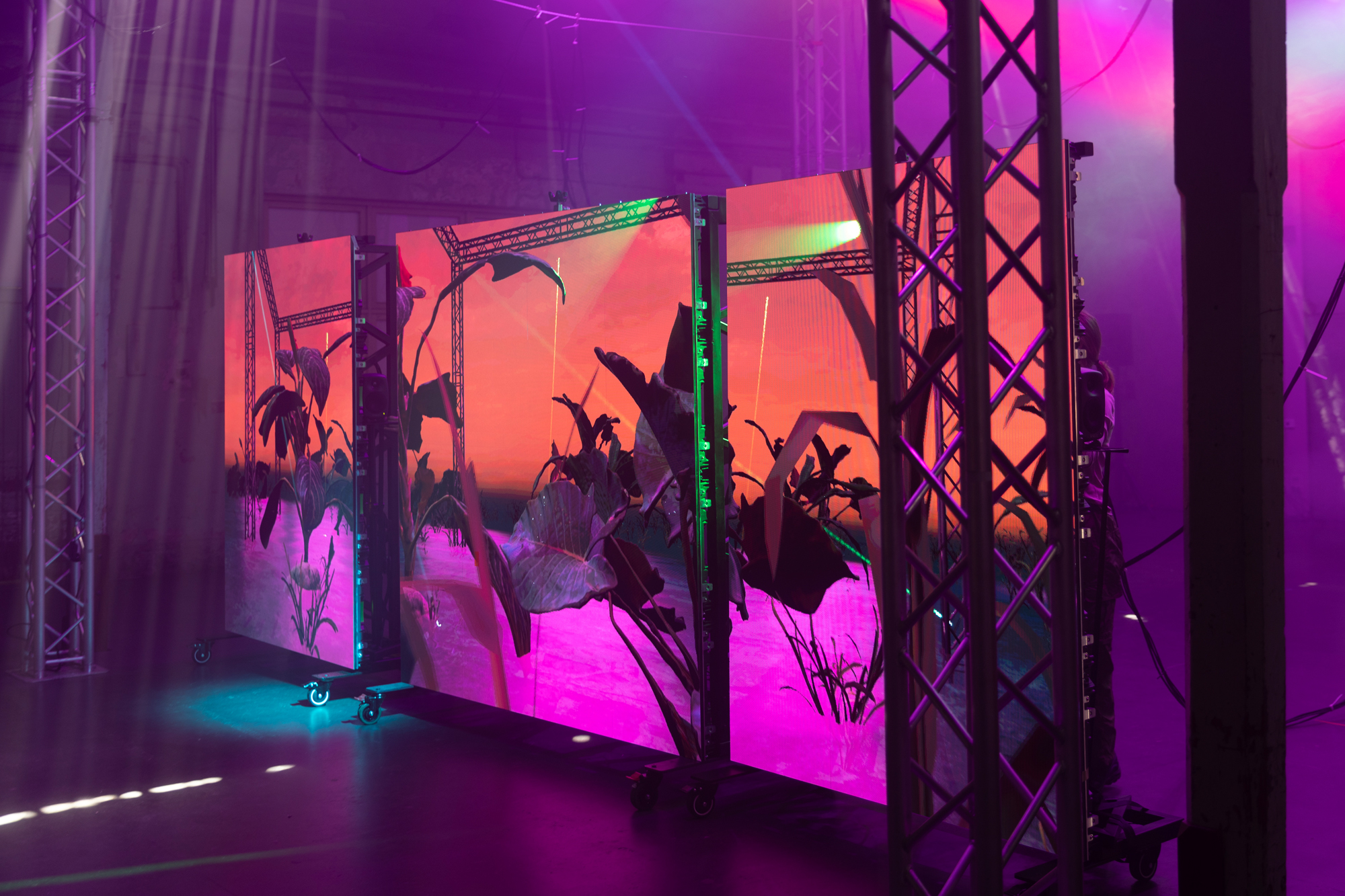
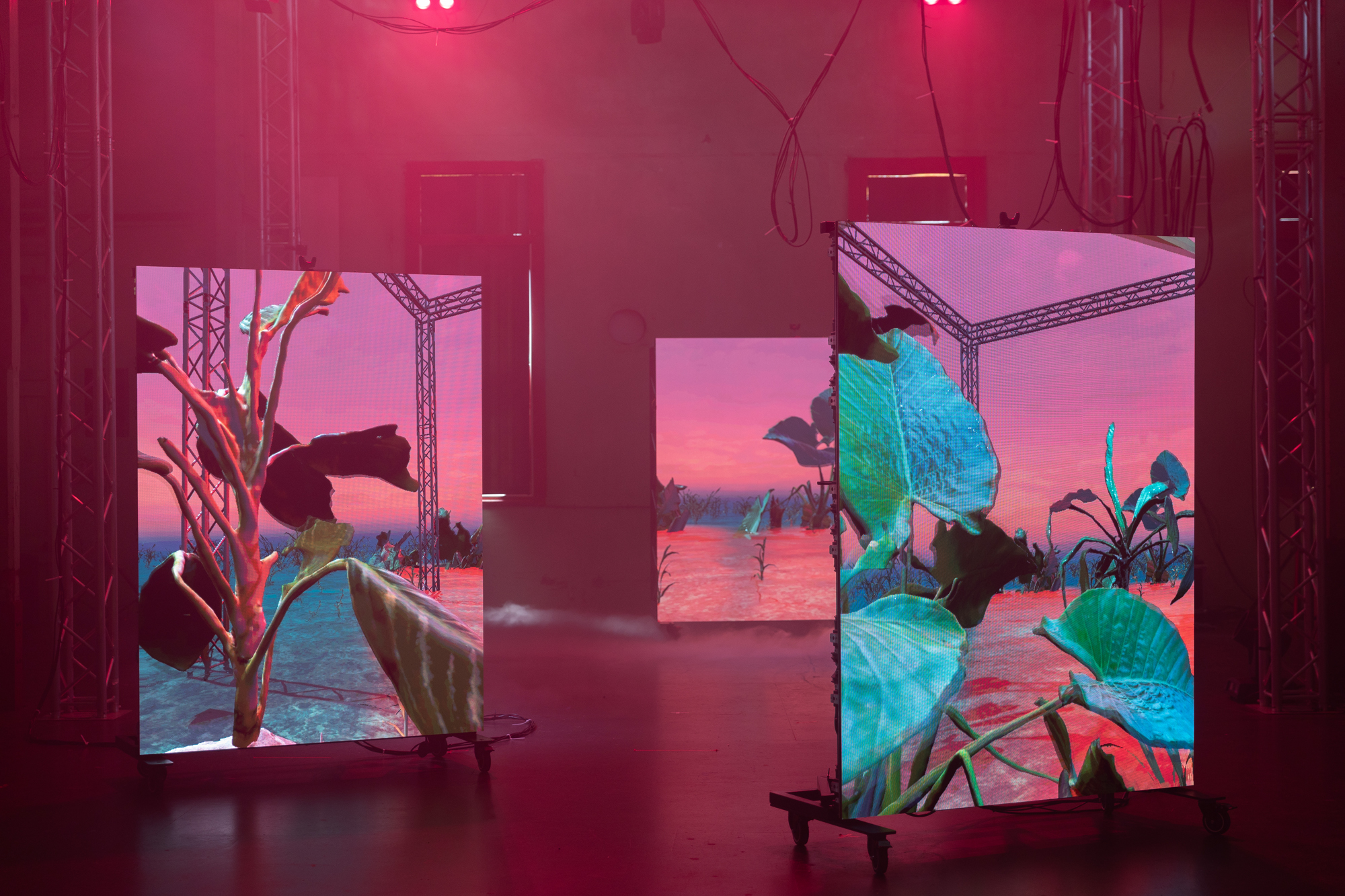
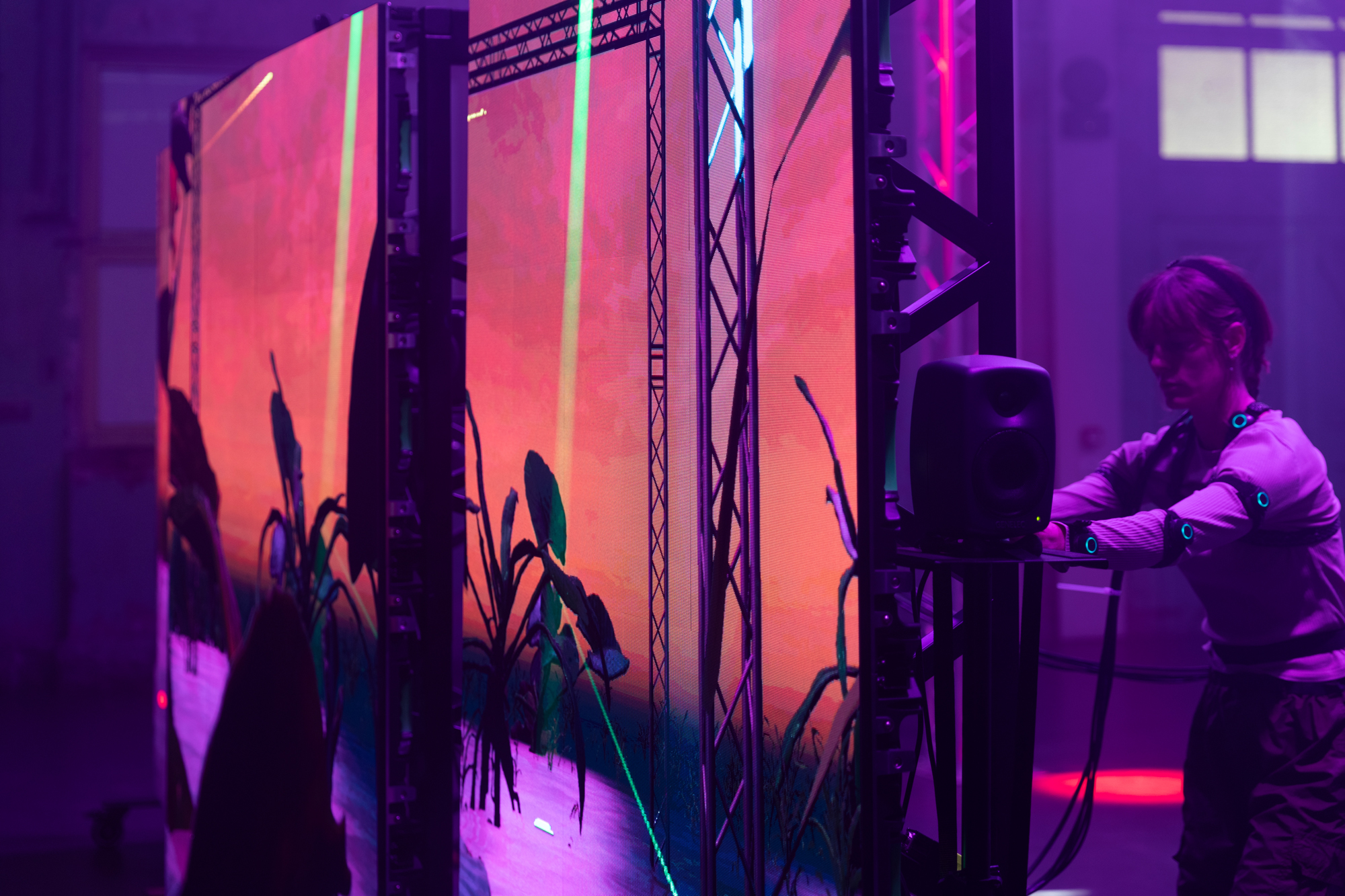

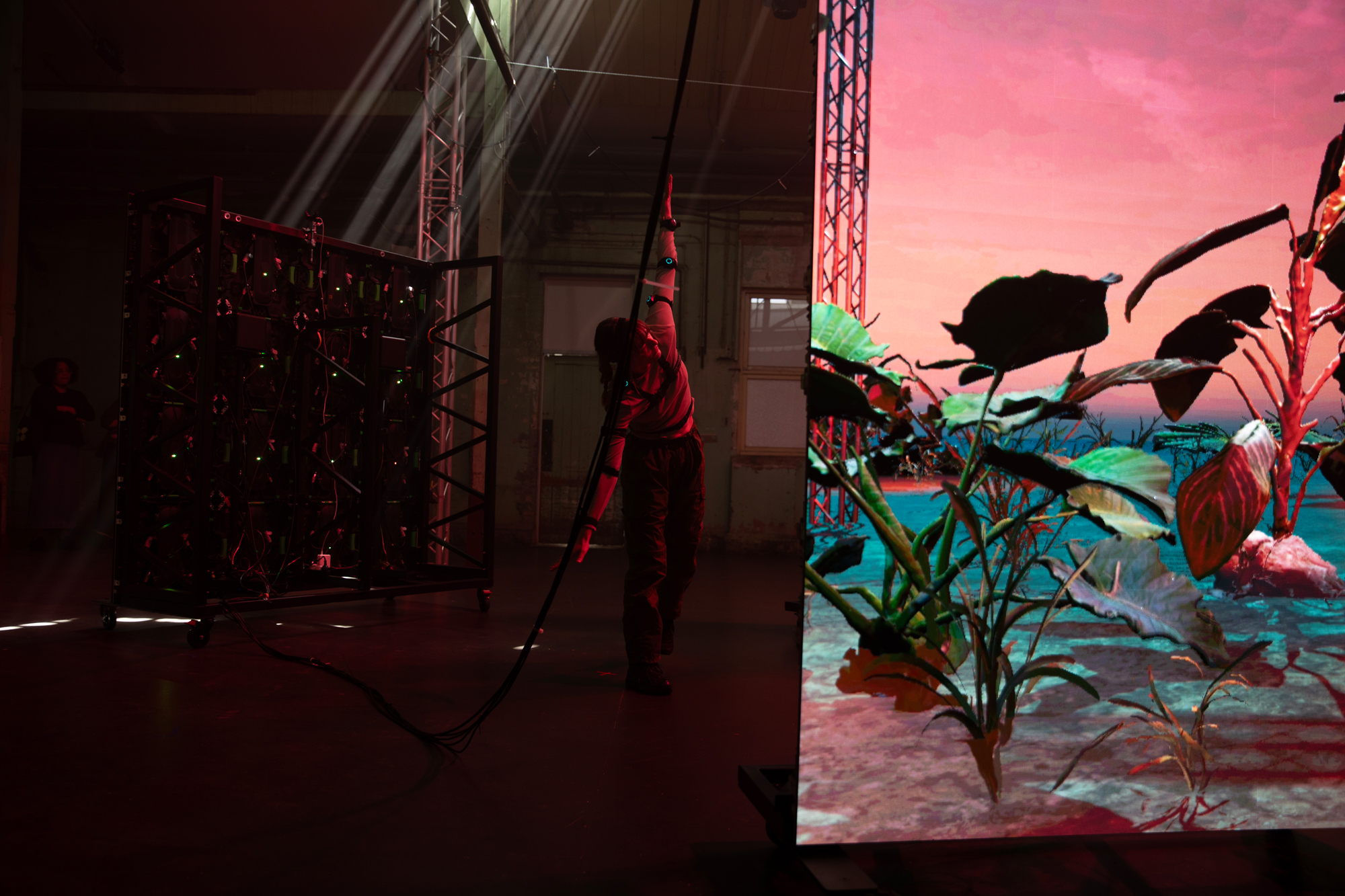

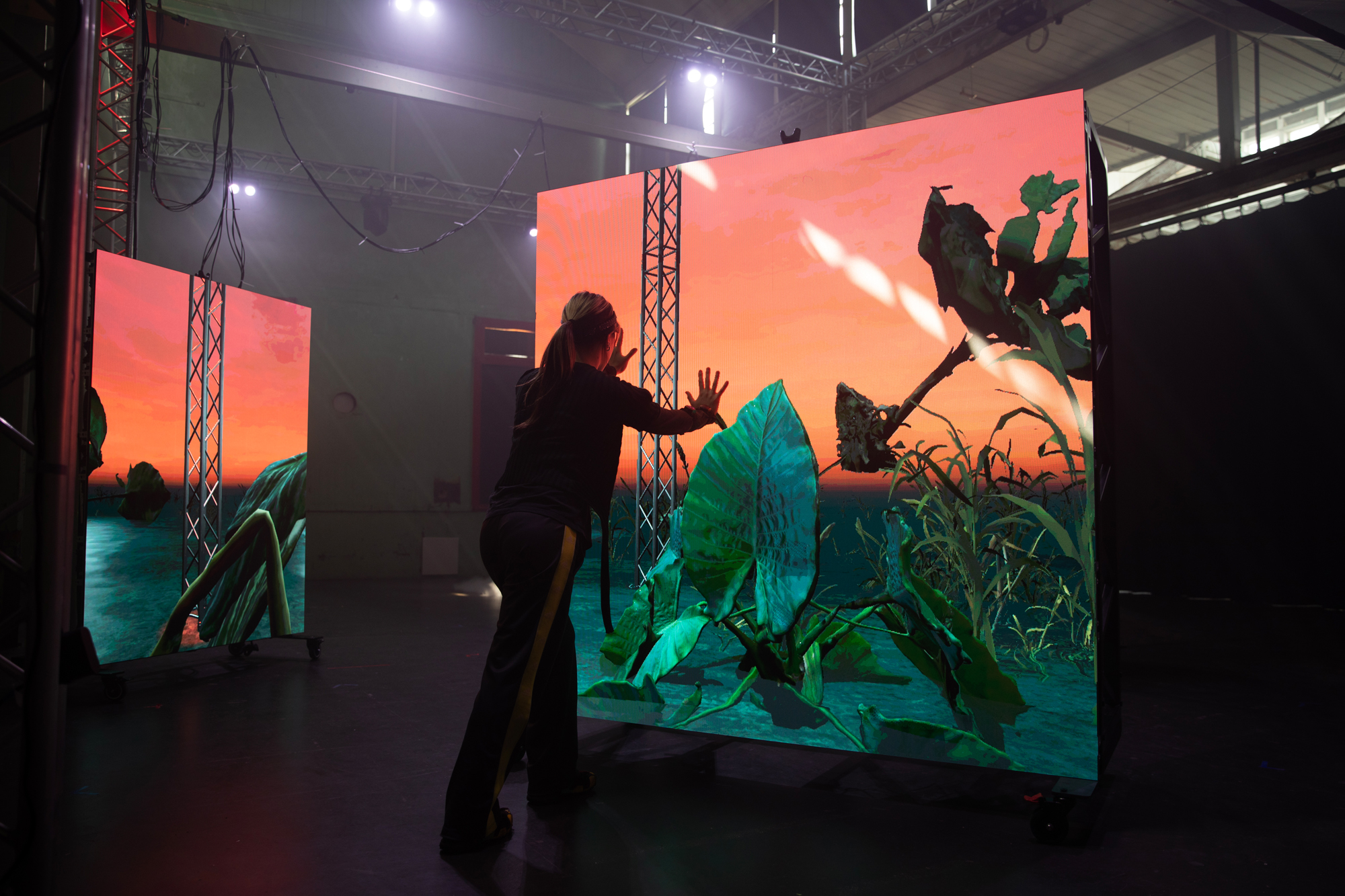
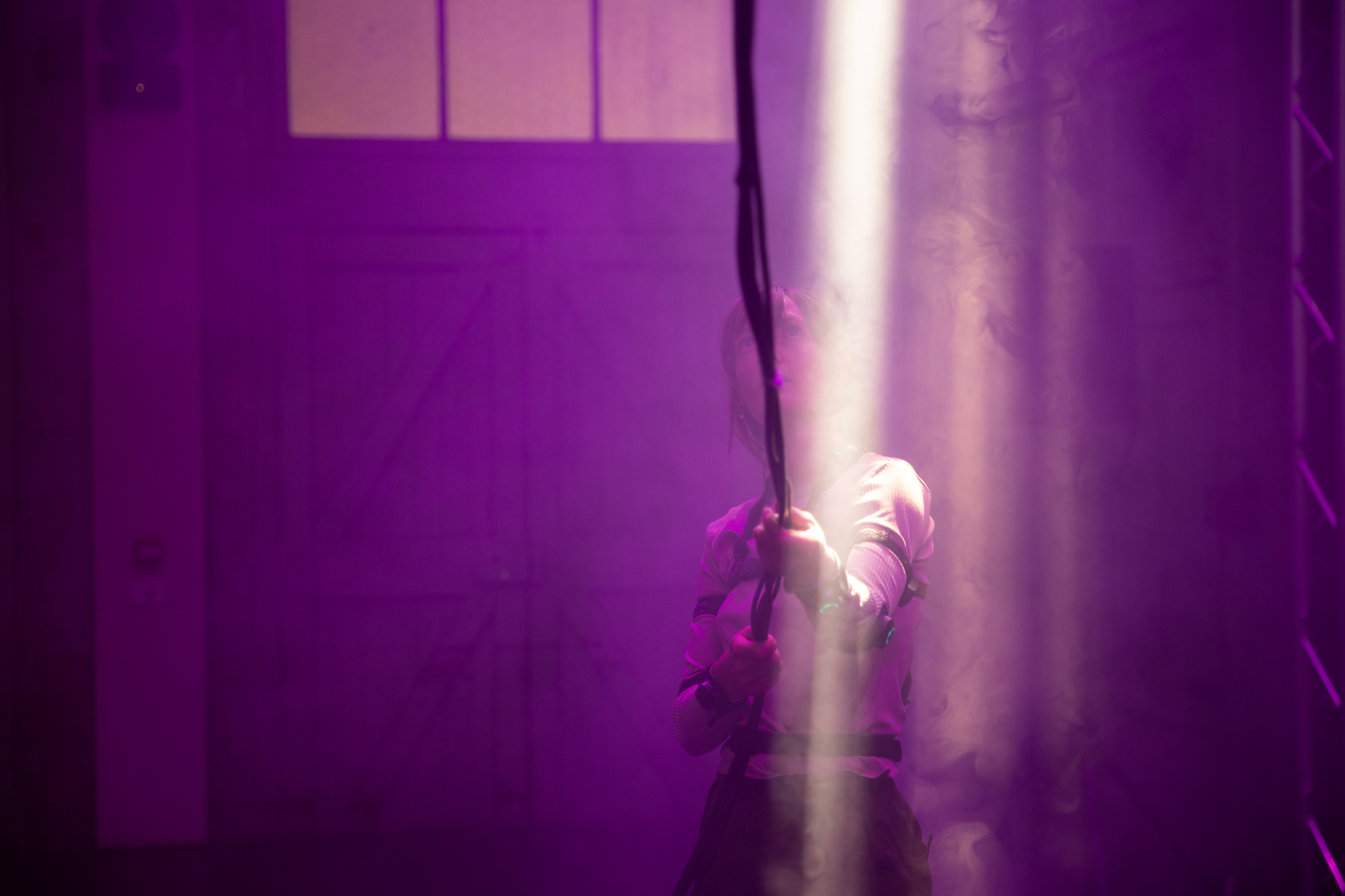
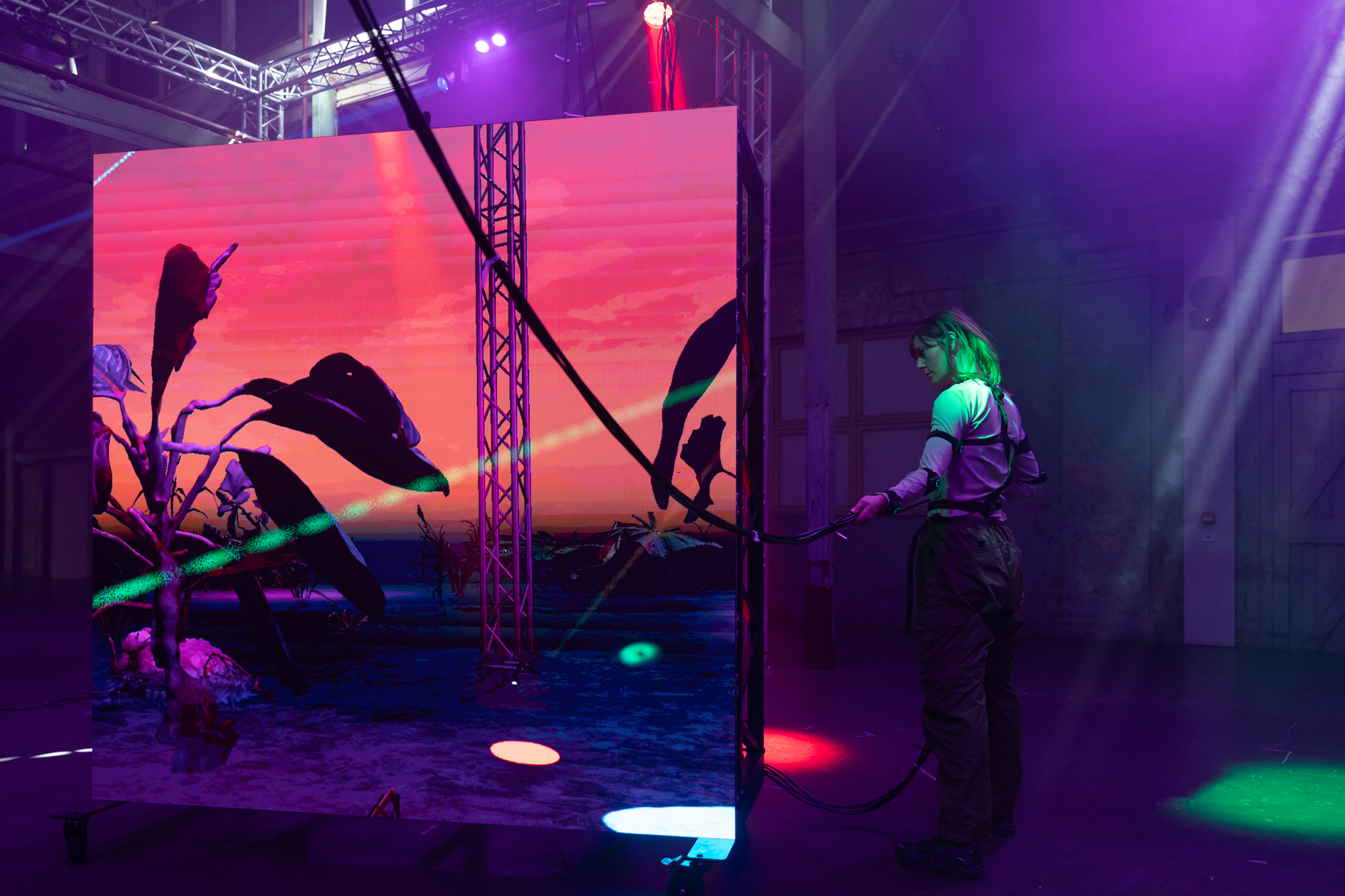
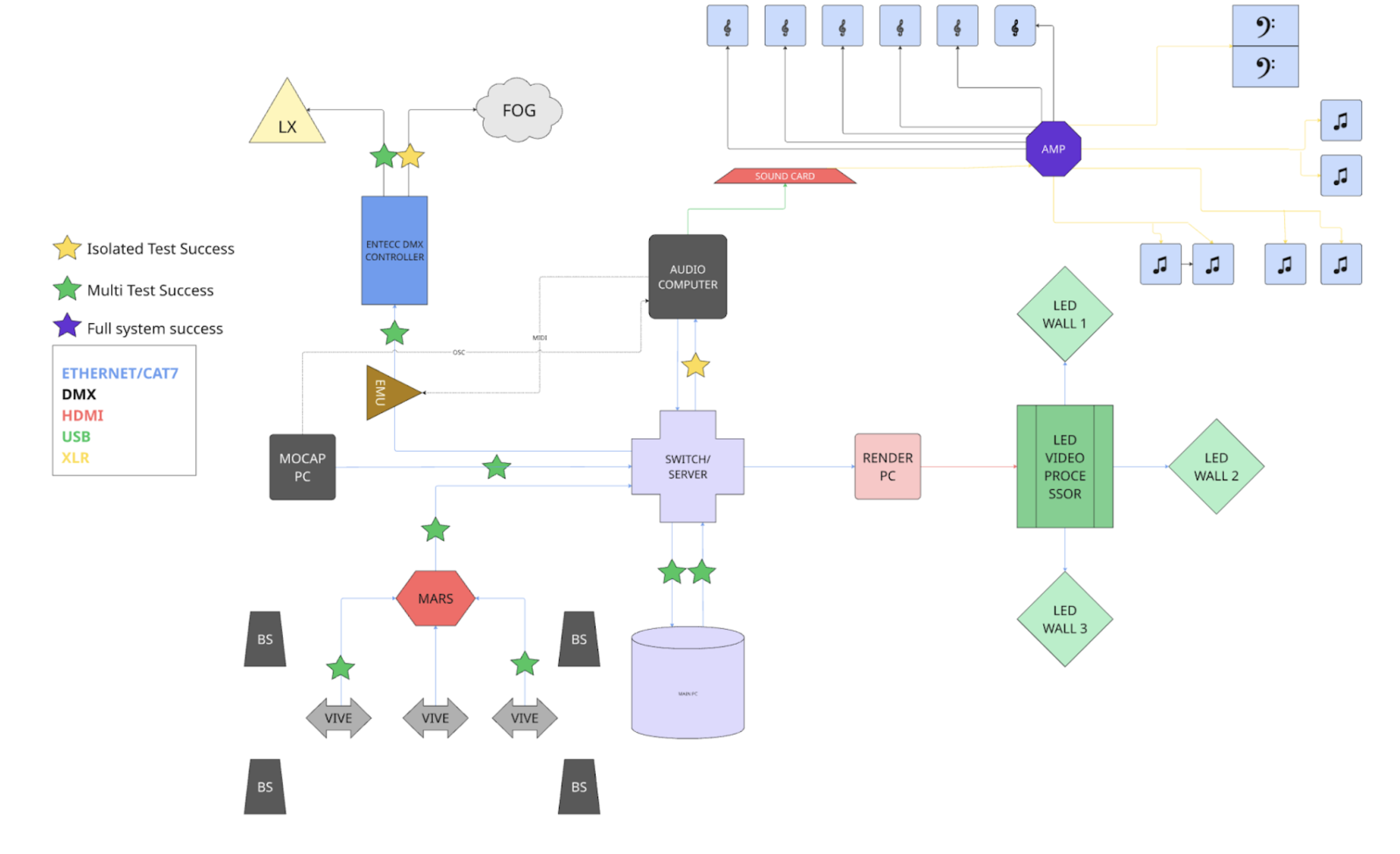
In Ecological Adaptation, the networking number 255.255.255.0 functions as both a technical and conceptual framework for understanding interconnection. In computer networking, this subnet mask defines how devices communicate within a shared system, distinguishing between the collective (network) and the individual (host). Within this work, this concept mirrors the distributed relationships between human, nonhuman, and machinic agents.
By networking multiple computers, sensors, and technologies, we construct an ecosystem where each element operates as a host within a larger web of exchange. The subnet mask becomes a metaphor for ecological entanglement: it marks boundaries not as separations, but as zones of relation through which information, energy, and agency circulate.
Development October 2025, Abbotsford Convent
In this development, we focused on working with sound and light, merging the actual and virtual. We used the VIVE tracker to enable real-time movement of the screen in virtual space, acting like a portal. Using DMX we linked the actual lighting with the virtual lighting and enabled sound to trigger lights.
Development and viewing at Meat Market, May 2023
This development focused only on the Motion Capture / Human Movement
to the virtual plants.
Work in Development Project8, December 2023



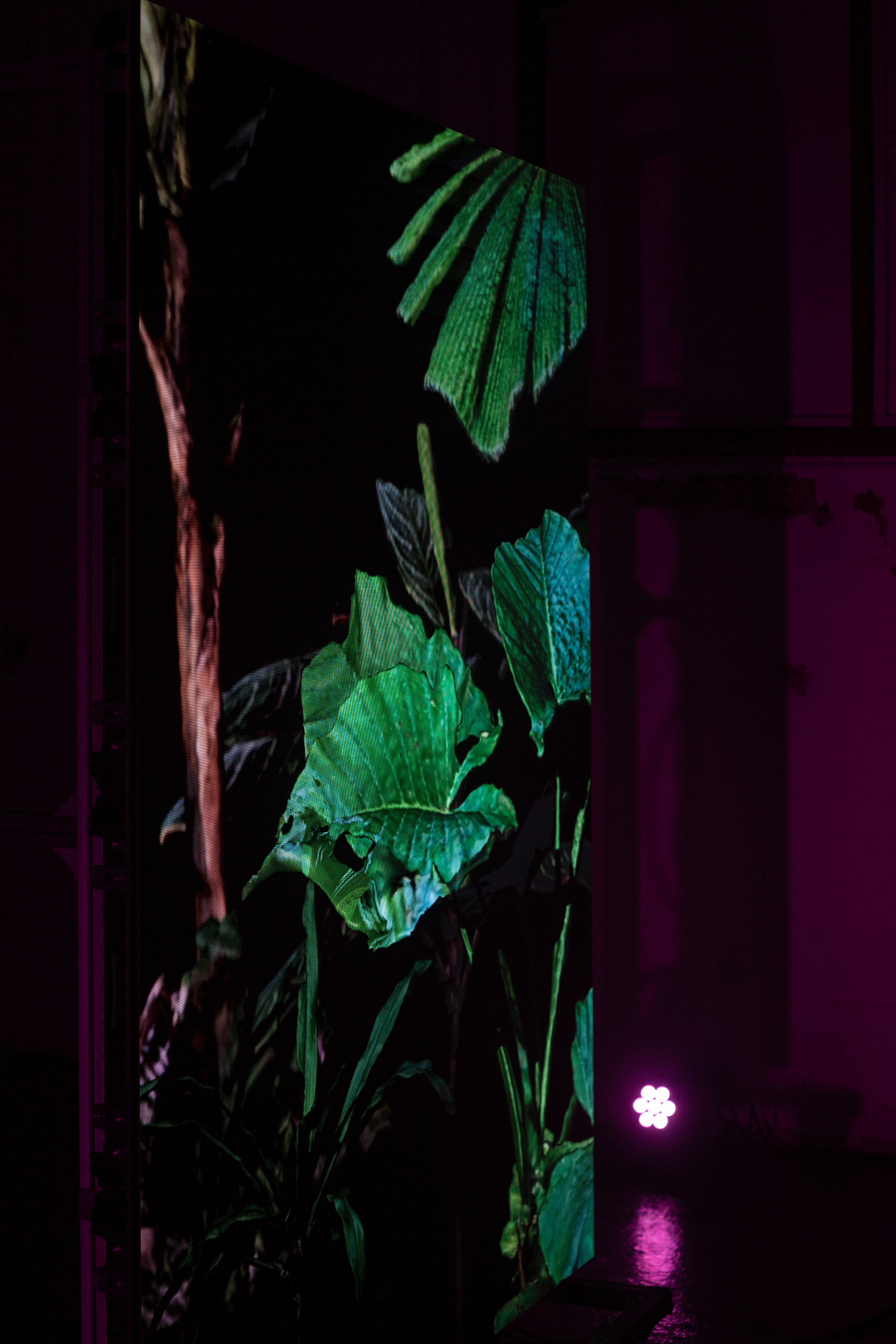

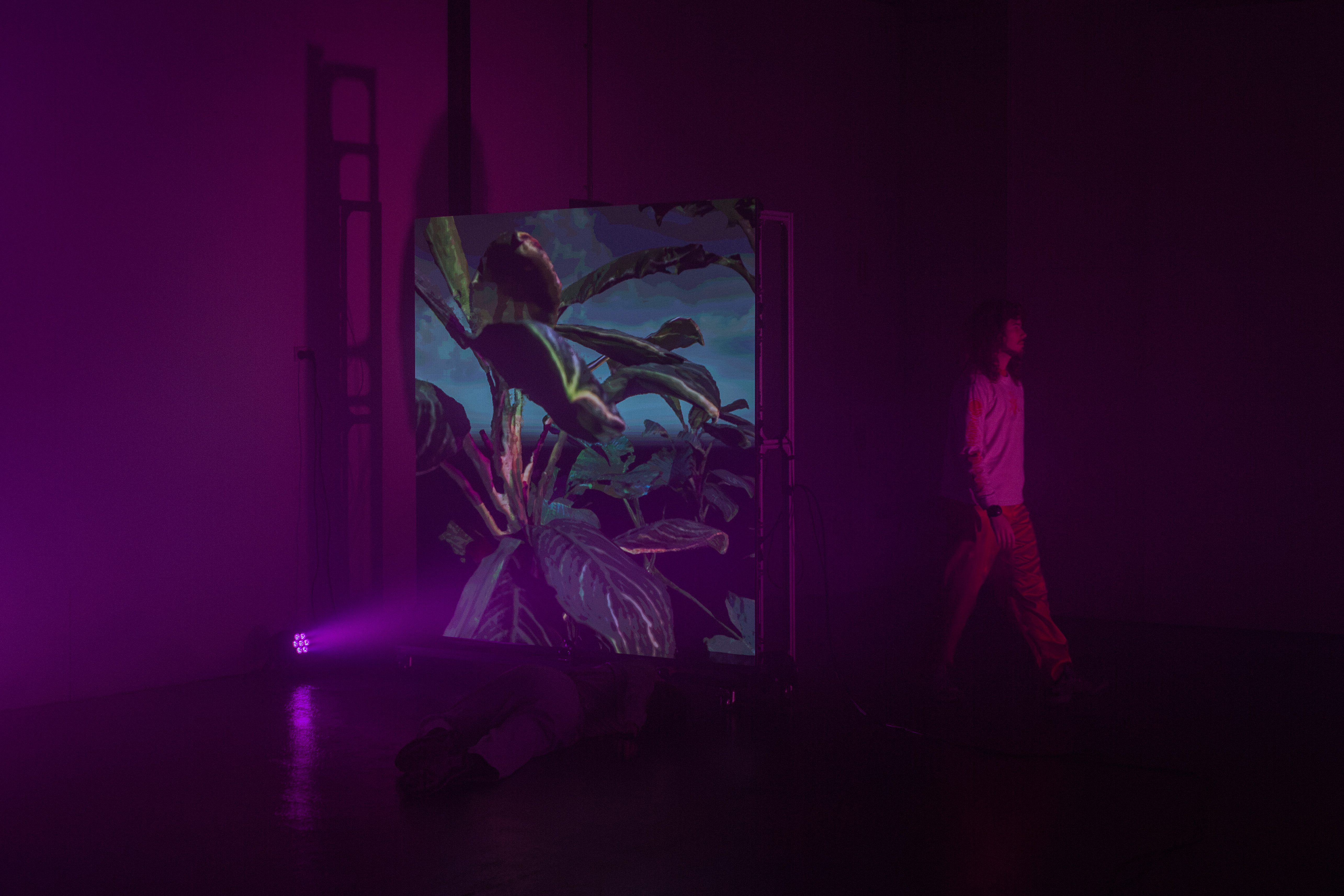

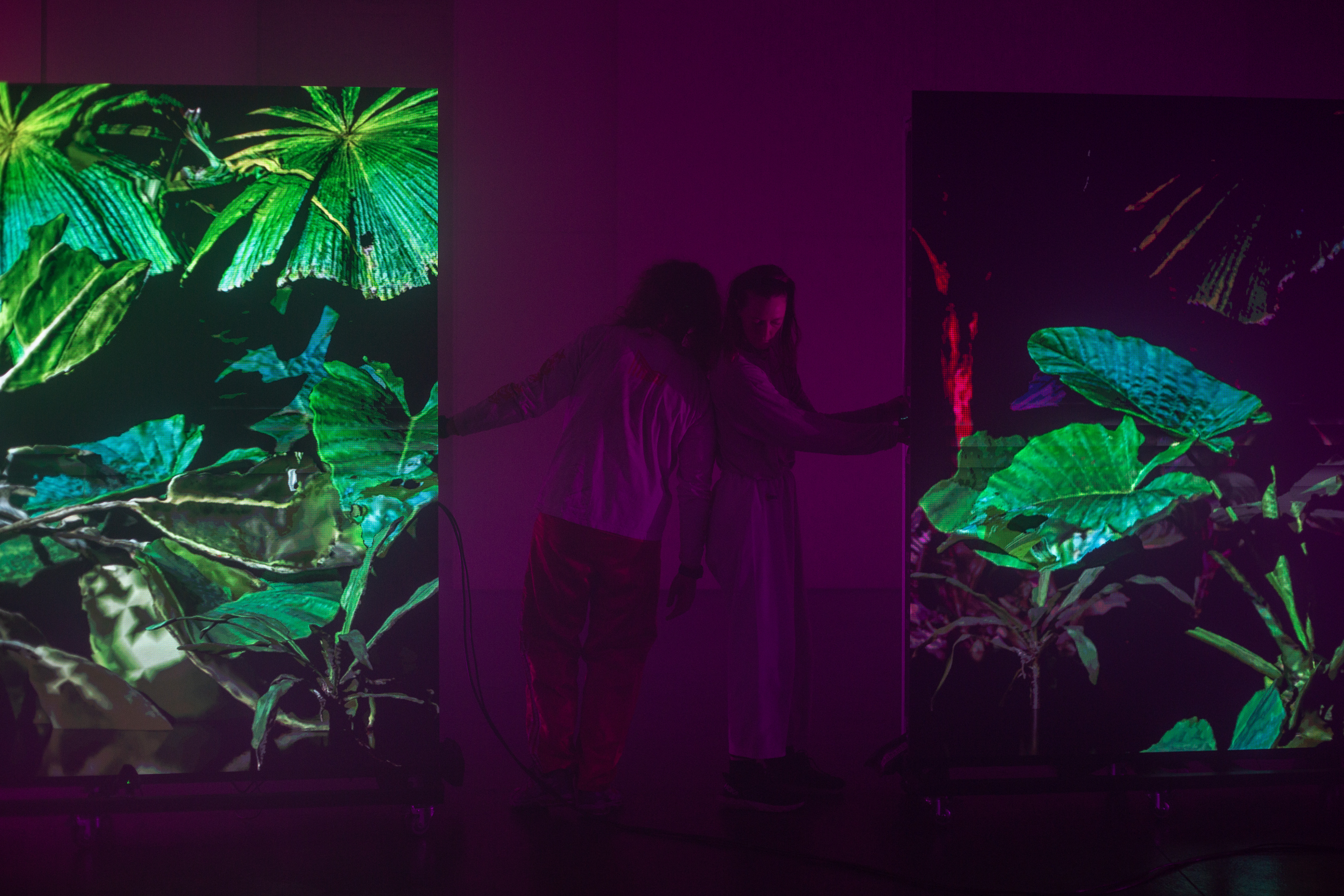
CONCEPT
Embedded in post-human feminism, "Ecological Adaptation" challenges the traditional notion of a clear boundary between humans and nature, and critiques the patriarchal structures that dominate society. The artwork delves into the concept of the cyborg as a cross-species hybrid, transcending the idea of human dominance and emphasising the significance of a multi-species perspective.
By incorporating post-human feminism, "Ecological Adaptation" interrogates the power dynamics inherent in human-nature relationships and dismantles the hierarchical structures that prioritize human superiority. The artwork calls into question the anthropocentric worldview that disregards the agency and intrinsic value of non-human beings.
Through the fusion of 3D modeled plant life and human movement using motion capture data, "Ecological Adaptation" blurs the boundaries between species and challenges the assumed dominance of humans. This hybrid form disrupts traditional notions of gender and species roles, opening up possibilities for new ways of perceiving and relating to the natural world.
"Ecological Adaptation" prompts us to reconsider our relationship with nature and the ways in which we can coexist and collaborate with other species.
Development Minimax residency at Chunky Move, May 2023
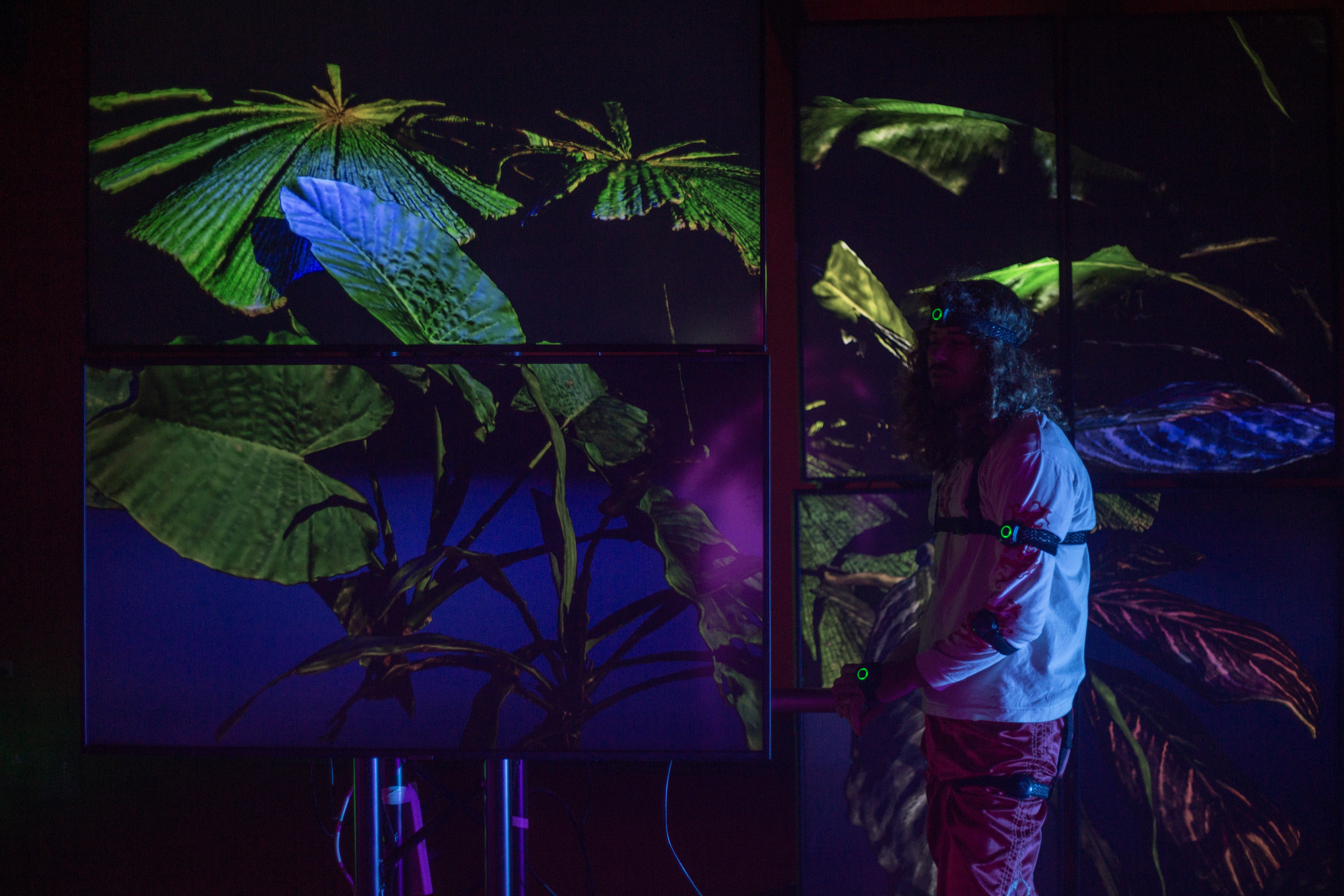
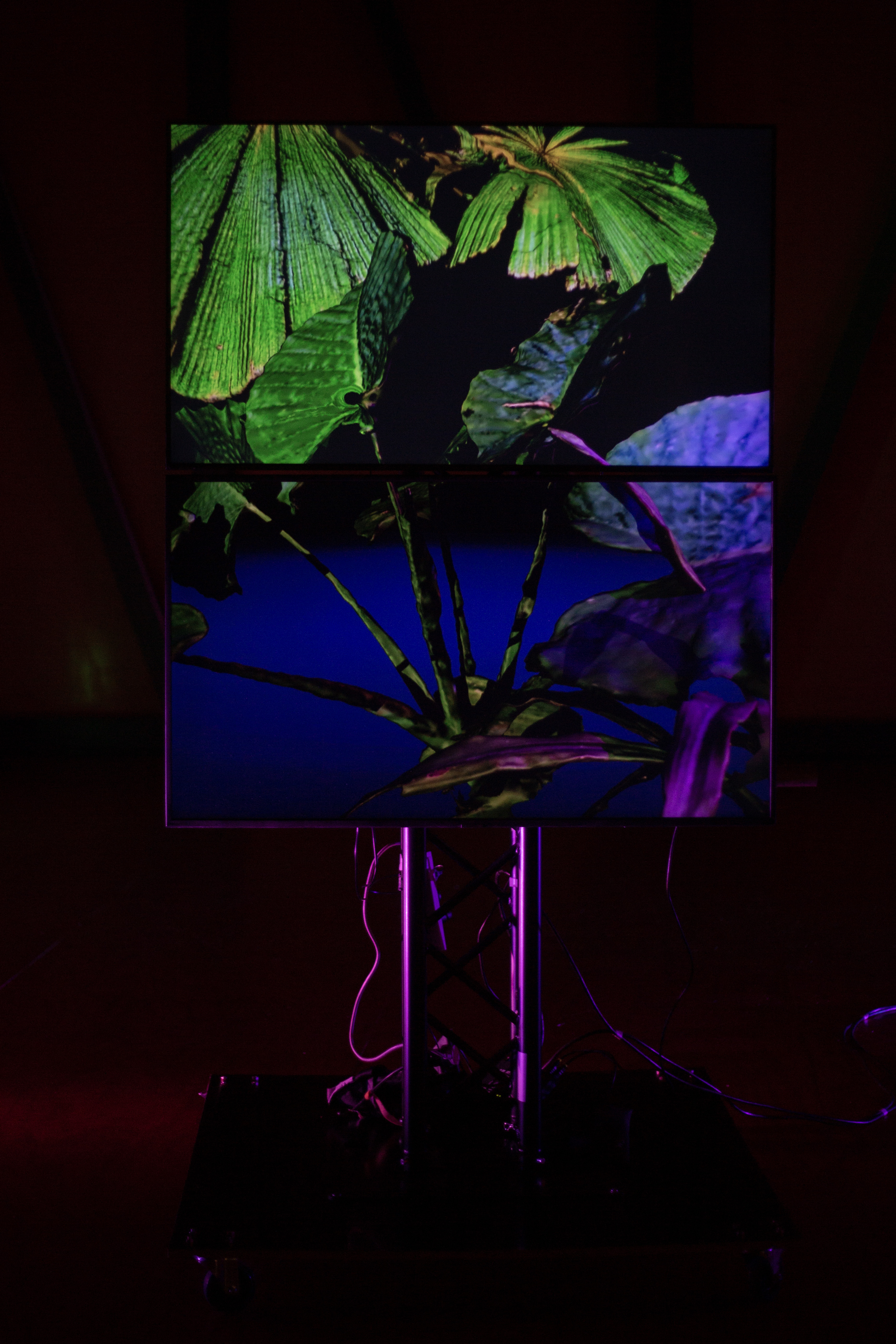


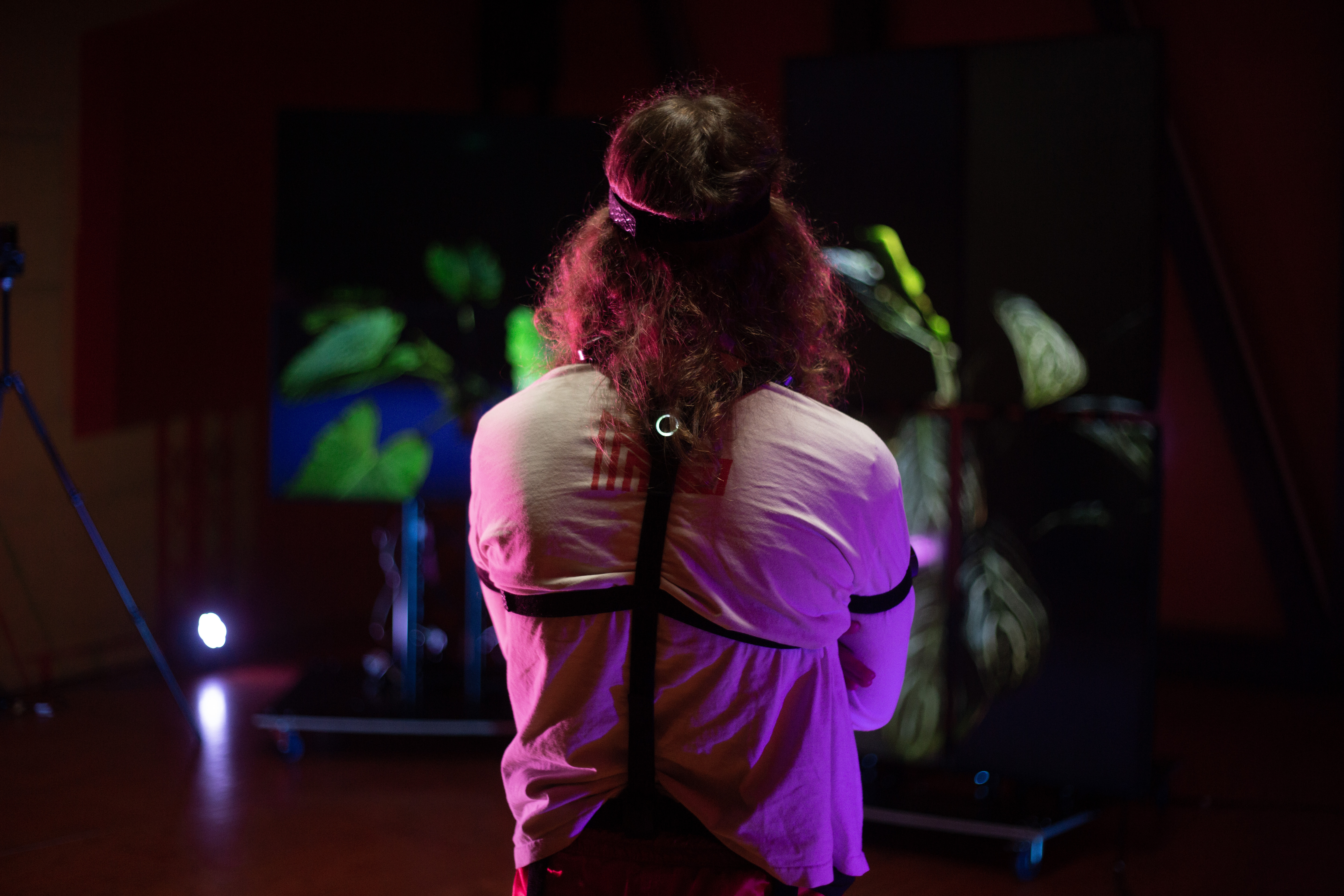


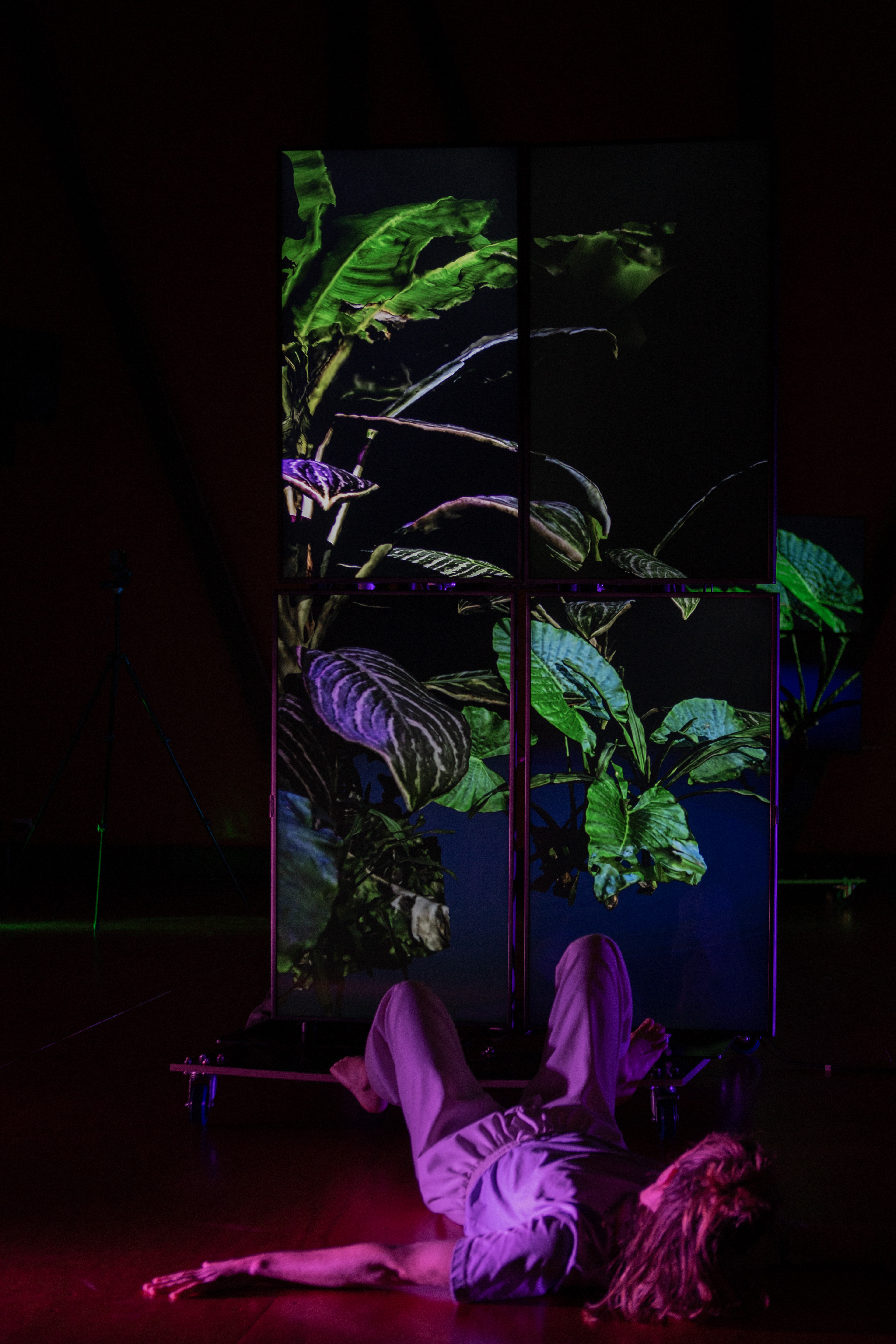
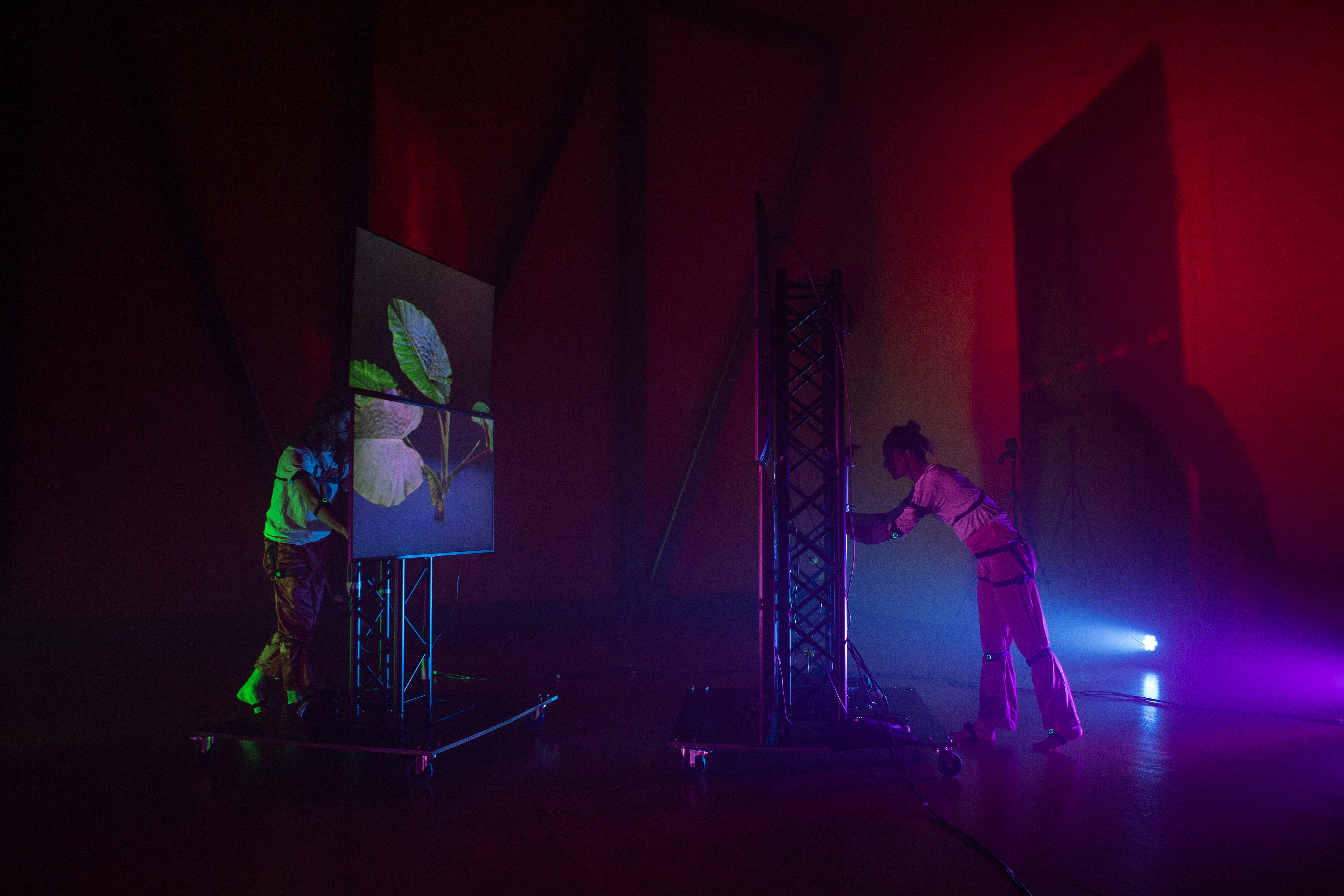
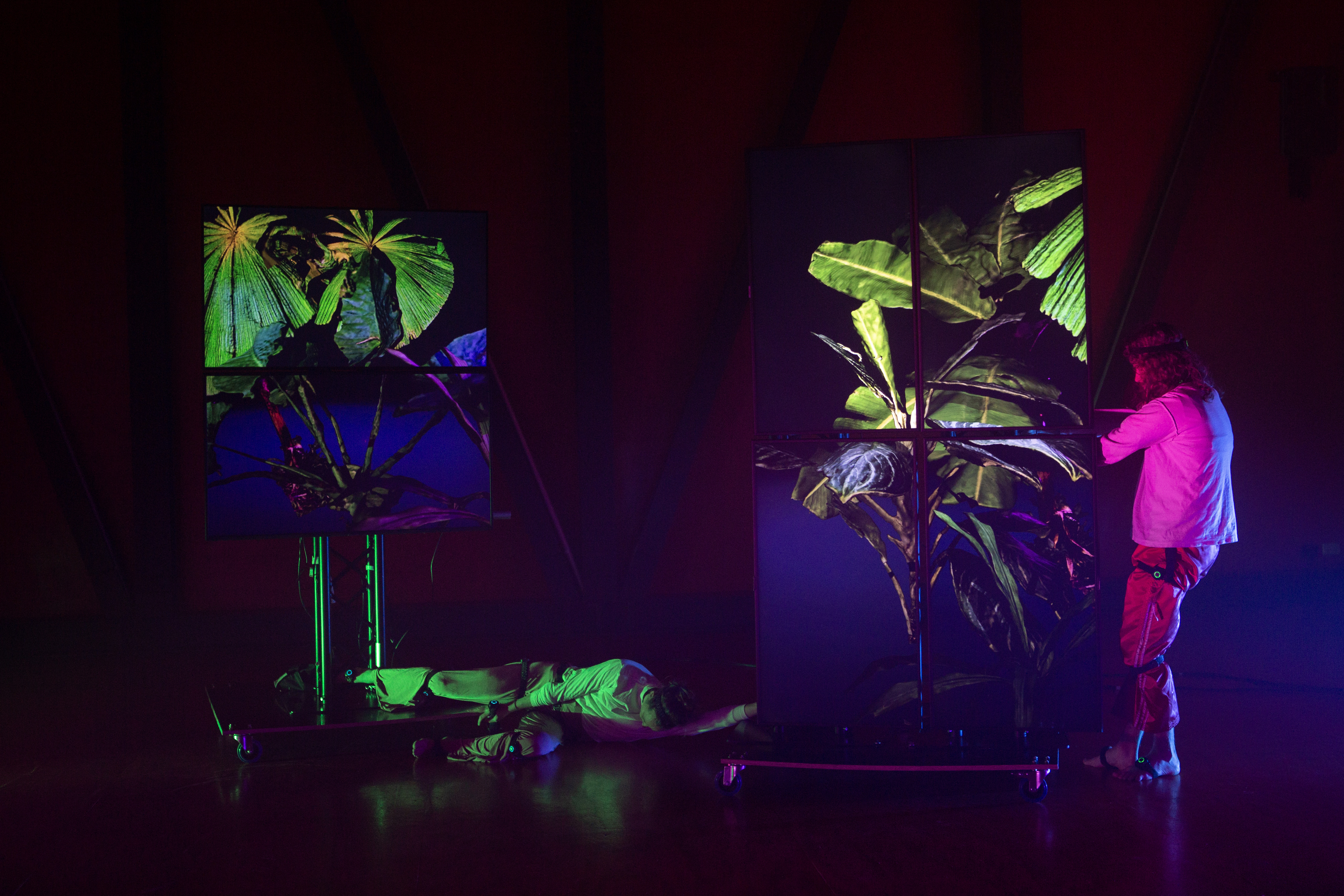
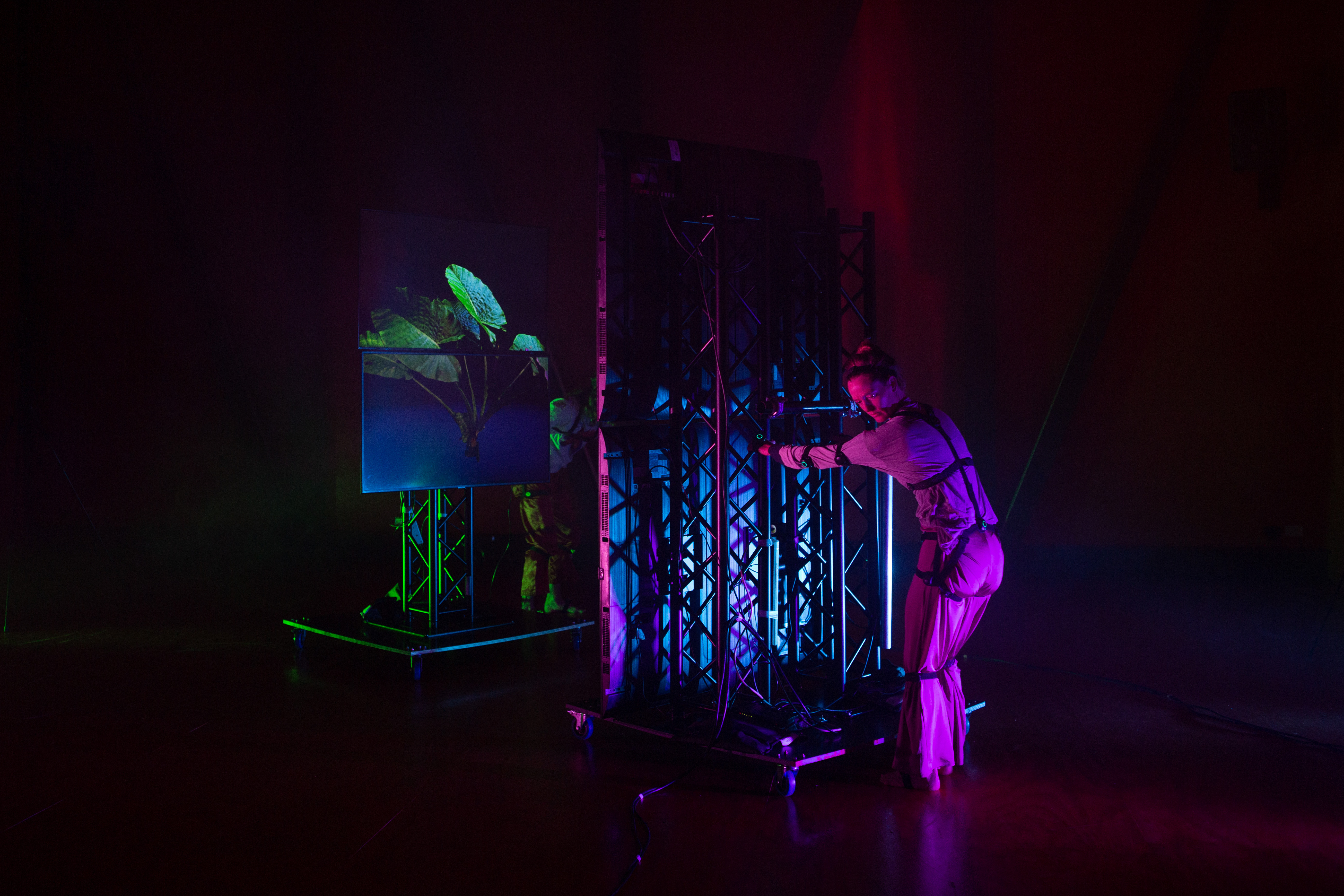
Devlopment at Platform Arts January 2023



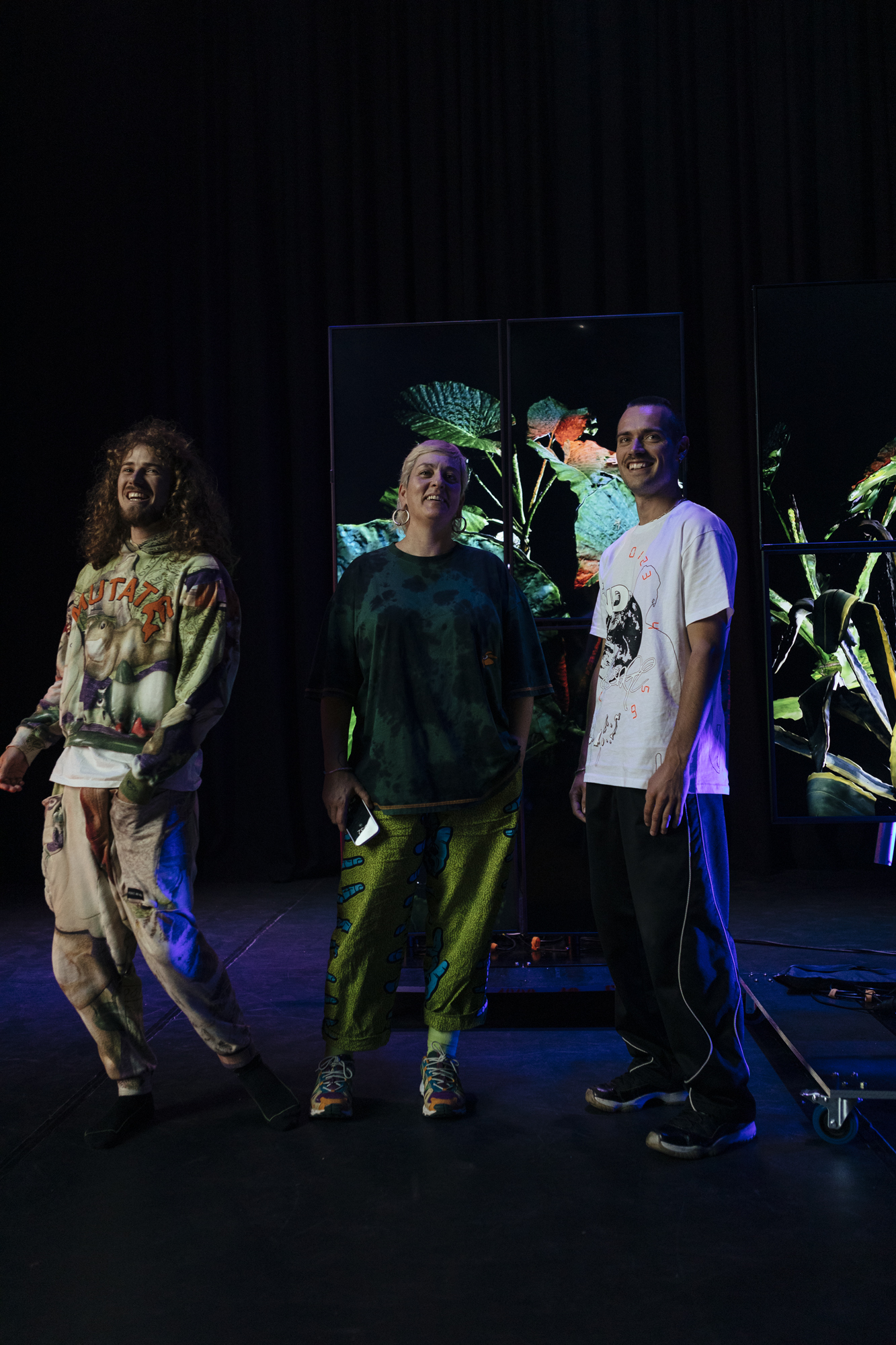
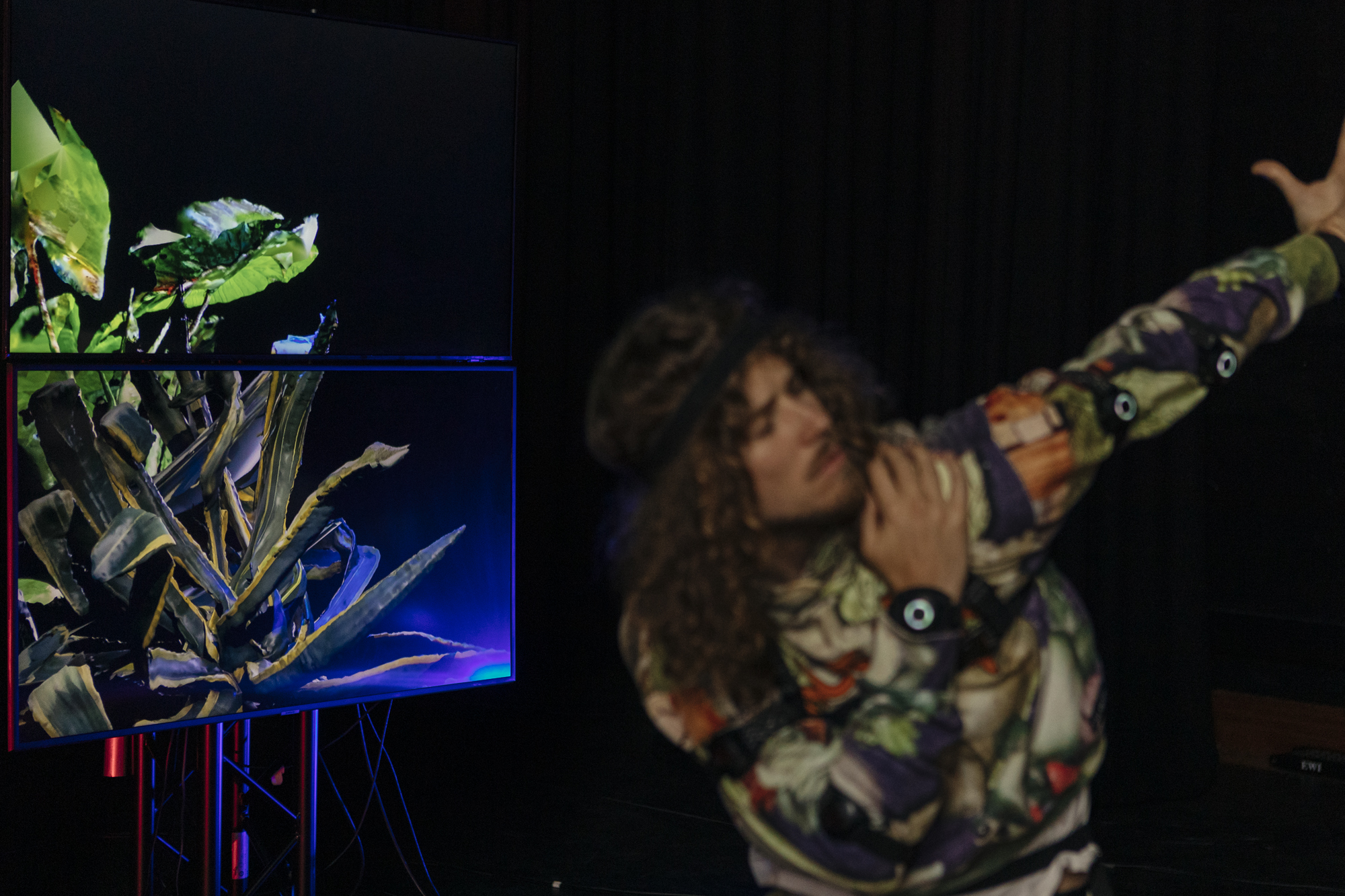






Development 2022




Using Motion Capture data this work animates the avatar and the plant with the same data




First volumetric scan, image set taken in studio with natural light. Volumetric scan not enough detail due to low light
Among Australia’s terrestrial ecosystems, some of the most vulnerable to climate change are:
- alpine systems as habitats shift to higher elevations and shrink in area;
- tropical and subtropical rainforests due to warming temperatures (moderated or intensified by rainfall changes);
- coastal wetlands affected by sea-level rise and saline intrusion;
-
inland ecosystems dependent
on freshwater and groundwater that are affected by changed rainfall patterns;
- tropical savannahs affected by changes in the frequency and severity of bushfires.




Human activities are reshaping our planet in profound ways. We have fundamentally altered the physical, chemical and biological systems of the planet on which we and all other organisms depend.
The changes that have occurred in the last 50 to 200 years have led scientists to propose a new geologic epoch, called the Anthropocene.
In the past 60 years in particular, these human impacts have unfolded at an unprecedented rate and scale. This period is sometimes known as the Great Acceleration. Carbon dioxide emissions, global warming, ocean acidification, habitat destruction, extinction and widescale natural resource extraction are all signs that we have significantly modified our planet.
It is clear that our climate is no longer stable and is beginning to warm rapidly. Scientists now agree that human activity, rather than any natural progress, is the primary cause of the accelerated global warming. Agriculture, urbanisation, deforestation and pollution have caused extraordinary changes on Earth.

“If we want to use forests as a weapon in the
fight against climate change, then we must allow them to grow old, which is
exactly what large conservation groups are asking us to do.”
“When you know that trees experience pain and have memories and that tree parents live together with their children, then you can no longer just chop them down and disrupt their lives with larger machines.”
“An organism that is too greedy and takes too much without giving anything in return destroys what it needs for life.”
― Peter Wohlleben, The Hidden Life of Trees: What They Feel, How They Communicate – Discoveries from a Secret World
“When you know that trees experience pain and have memories and that tree parents live together with their children, then you can no longer just chop them down and disrupt their lives with larger machines.”
“An organism that is too greedy and takes too much without giving anything in return destroys what it needs for life.”
― Peter Wohlleben, The Hidden Life of Trees: What They Feel, How They Communicate – Discoveries from a Secret World




